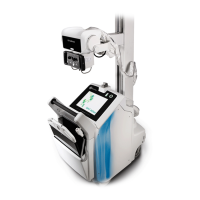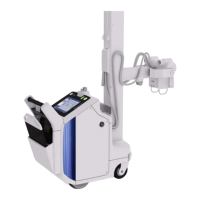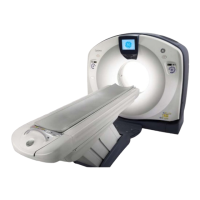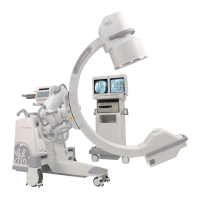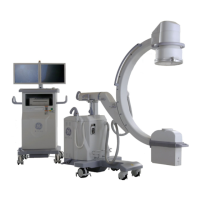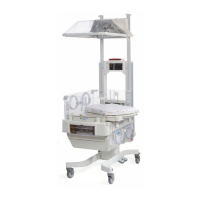Chapter 13: Advanced Applications
5495975-1EN Rev.9 13-3
© 2013-2017 General Electric Company. All rights reserved.
Grid
The processing algorithms are optimized for chest imaging with grid IN. Removing the grid may degrade
image quality.
Patient Dose
Assuming correct selection of patient-size setting, the entrance dose (air-kerma) of the low-kVp exposure
should be equivalent to that of the high-kVp exposure. For a typical two-view chest exam, the Lateral
view dose is much higher than that of the PA or AP view. Hence, in general, the dose of a Dual Energy
chest exam (low-kVp PA or AP, high-kVp PA or AP, and standard LAT) is approximately 120% to 130% that
of a non-Dual Energy chest exam (high-kVp PA or AP and standard LAT).
Dose estimates are not provided for Soft-Tissue and Bone images, since these images are not acquired
but derived (created by image processing algorithms). Dose estimates are provided for the acquired
(High-kVp and Low-kVp) images of a Dual Energy acquisition.
Technique Settings and Image Quality for Abdominal
Exams
When performing a dual energy exam on the abdomen, set the low and high kV value and the mA for low
kV exposure. The system calculates the mA for the high kV exposure.
For abdominal exams, the system uses low kV exposure as the standard processed image (for chest
exams the high kV exposure is used).
Patient Size
The selection of appropriate patient-size setting is needed for:
correct patient dose allocation between the two exposures
optimal image quality
The recommended thickness ranges are:
Small Adult - when the patient measures less than 22cm.
Medium Adult - when the patient measures between 22cm and 27cm.
Large Adult- when the patient measures more than 27cm.
High kVp
Can be set anywhere between 110 and 150. This is usually set to that of the standard (non-DE) chest pro-
tocol/technique. In general, a higher high-kVp (default is 120) will result in better “tissue cancellation”.
However, for large patients, slightly increasing the high kVp (e.g., to 130 or 140) may improve x-ray pene-
tration and consequently improve the noise characteristics of the resulting soft-tissue and bone images.
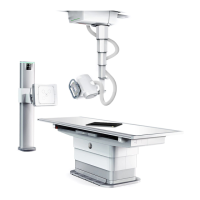
